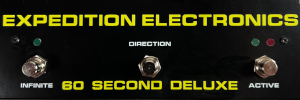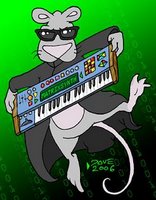Monday, July 16, 2007
Formula Filter Array 24 Update
In case you missed the update to this post, apparently the filter was actually made by Bob Moog for Patrick Gleeson and it was the only one made. Comments in this post disabled to keep them with the previous post.
Solid State Musical Tesla Coil
YouTube via thegeekgroup.
"Joe DiPrima and Duck demonstrate the Solid State Musical Tesla Coil"
Don't miss the ending after the credits. Also check out these Tesla Coil posts for more.
AELITA
 Click here for shots via this auction.
Click here for shots via this auction. "Synth was made in 80's years in USSR. Aelita is rare synthesizer actually much more rare than well known polyvox soviet synth. Aelita's sound can be very organic, mellow and very fat, agressive also. Synthesizer has very original "transformer" design with removing main operation panel. It is the soviet version of famous minimoog synth. It is big and fat sounding synth. One of the best analog mashines prodused by soviet music industry.
Aelita has three oscillators with square, pulse and saw waveforms.There is LFO with triangle,square,saw and ramp waveforms.Every oscillator can be independently detuned in one octave range. We have possibilities in any chord playing here.You can switch oscillators from 32' to 2' registers.Every oscillator has it's own level slider in mixer section.Oscillator's pitch can be modulated by LFO and first oscillator can be modulated by third oscillator.Than we have nice sounding moog type 24db lowpass filter with screaming resonanse and fat low end.Filter has it's own ADS envelope, keyboard tracking and can be modulated by LFO.VCA has it's own ADS envelope with release switch.There is unussual unison mode when you can get signal of all oscillators in 4 registers in one time. Dimensions: 310x350x920 mm. Weight: 18 kg."
Formula Filter Array 24
 Update: be sure to check out the comments for more. This was actually made by Bob Moog.
Update: be sure to check out the comments for more. This was actually made by Bob Moog.Title link takes you to shots, including some of the inside, via this auction.
"This auction is for one vintage Formula Sound Multiple Resonance Filter Array. This is a USA-made fixed filterbank / string filter from the 1970s that was (according to the engraved faceplate) custom made for San Francisco musician and producer Patrick Gleeson. Gleeson made some excellent albums on his own, but was better known as a session musician and producer/engineer who worked with artists as diverse and influential as Herbie Hancock and Devo. Though this model was advertised by Formula Sound in some magazines back in the 70s (see picture), this is the only actual unit I have ever seen or heard of. Since the faceplate says it was custom made for Gleeson, I believe it is the only one in existence. In theory it is similar to Moog String Filter but with greatly expanded and more tweakable facilities, but generally it excels at allowing you to electronically simulate the natural resonances of an acoustic chamber (like a violin or other stringed instrument).
This is also presumably somewhat of an inspiration for the Moog MURF pedal, as they
 seem to have taken the name from this unit (MURF stands for MUltiple Resonance Filter). Unit runs on 110V voltage and comes with a standard IEC power cord.
seem to have taken the name from this unit (MURF stands for MUltiple Resonance Filter). Unit runs on 110V voltage and comes with a standard IEC power cord.This piece is generally in very good cosmetic and functional condition, but has a few warts that I will be more explicit about in the following paragraph. All of the functions should be fairly self-explanatory... a mono signal goes to the input of the unit and is fed through 24 steep bandpass filters at various fixed frequencies, each of which can be assigned to one or both of the output channels via bus switches on the front panel. When all the sliders are down the unit is fully attenuated (silent).... as various frequency sliders are raised, that frequency becomes audible. There is a resonance shift rotary switch that allows you to change the overall harmonic tone of the selected frequencies and a drive knob which seems to have a compressor circuit built-in and sounds more like a tone control than a harmonic clipper.
In addition, there is a rotary switch that selects the overall mode---bypass (dry signal only), direct (unit engaged, frequencies sent directly to selected output bus), x-fade and x-pan (both similar in theory but different sounding). There are also 1/4" jacks for CV (control voltage) access so that you can integrate it into your modular system... one is a VCA input jack and the other is a modulation output jack that allows you to send the internal modulation LFO out to external equipment for coordinating sweep times. This is a very full featured unit that allows you to radically alter a sound, though it sounds very different and in a lot of ways a lot less radical than a standard lowpass filter.
 Everything generally works as expected with a few exceptions, so I'll be pretty explicit here about everything that isn't quite perfect.
Everything generally works as expected with a few exceptions, so I'll be pretty explicit here about everything that isn't quite perfect.---The Drive pot is very scratchy.
---The Resonance Shift rotary switch is very loud and emits a loud thump through the outputs when switching, though this seems to be more by design than by a defective switch.
---The output Bus Selector switch for the 372 Hz frequency is wobbly and doesn't click into place like the others but it selects the output bus just fine.
---In Direct mode, in which is acts as a standard fixed filter bank, the B output bus is noticably quieter (about 15 db or so) than the A output when all frequencies are assigned to both buses. The overall volume difference, however, seems to depend on the drive level, input level and resonance shift amount. At certain settings the output levels are much closer to each other, though. I overcame this by running the 2 outputs into different hard-panned mono channels on my mixer and using the input gain pot to make up the difference.
---In X-fade mode it is the same as Direct mode---one channel is louder than the other. This is very noticable when using the 2 hard-panned mixer channel trick that is described above.
---In X-pan mode the output channels are pretty much equal volume and this mode sounds very similar to the X-fade mode, so I just used this mode instead.
---The front panels is very clean but there are numerous scratches and wear on the top, bottom and sides of the unit. There are some small paint marks that someone added to the selector switches and on one of the frequency slider caps.
This thing is built like a tank. All of the frequency sliders have very attractive machined aluminum tips. It does have some wear, but looks very good both inside and out, especially for a 30-plus year old unit. I've owned it for close to 10 years and I just had it serviced by analog guru Phil Cirocco in fall 2006 to fix a dead output channel. Though I don't have any schematics for the unit, any competent tech should be able to service it as the filter cards are modular (12, with 2 frequencies per channel) and all of the other stuff (VCAs, etc) are on breadboards and the circuits are clear and easily traceable. As you can see by the high quality parts and tons of circuitry, building something like this at today's prices would cost many, many thousands of dollars."
Marshall Time Modulator and the Marshall Tape Eliminator
"To my friends at Whatever Works:
I'm very pleased to announce that I've signed an agreement with the wife of the late Steven St. Croix to sell and service the Marshall Time Modulator and the Marshall Tape Eliminator.
Lots of engineers know these remarkable units, and I'll bet that some here bought their MTM decades ago. It certainly was a beloved piece of gear! Here's a brief history, and for those who don't know it, description of what the MTM does.
The MTM is an analog effects unit that Steve developed in the late 70's. It doesn't truly modulate time; you can't go back and buy Apple stock for $15. It does modulate and manipulate audio delay time, producing many unique and amazing effects. The input signal passes through two analog delay lines. The delay time is adjusted by manual control, a wide range LFO circuit, or (for most effects) a combination of the two. Dry and delayed signal are combined, with feedback added to taste.
This simplified description may sound quite dull, but the sounds produced by the MTM are utterly amazing. Effects include vibrato, positive flange, negative flange, cardboard tube echo, automatic double (and triple) tracking with pitch and delay dithering, resonant flange, circus vibrato, arpeggio, pitch quantizing, and many more. The MTM was used to create Darth Vader's voice in Star Wars, and was used on many hit records.
My understanding is that Steve developed the very first prototype in 1975, to win a bet. He brought it into a studio to try it out in session, and everyone was blown away. The AES Convention happened to be a few days away, and everyone encouraged Steve to produce a finished demo model and show it, which he did. His booth was mobbed at the AES and the Time Modulator instantly got lots of great press. Initial prototype runs were produced, with early batches going to Stevie Wonder and Sound 80 Studios in Minneapolis. Wrestling with improvements and tweaks, it was another two years or so to before Steve went into production. But when the 5002 Time Modulator was finally released, it scored rave reviews in Studio Sound, REP, and Modern Recording, and sales took off.
The 5002 was followed by the 5402, which featured a new control set and greatly extended delay times. Steve also developed the AR-300 Tape Eliminator, which simulated delay at various tape "speeds". It included a tape-like EQ curve and natural sounding tape compression -- just like the boxes released today. Of course, he beat all the new guys to it, by 20 years or so!
It's worth repeating that these were analog boxes, totally free of quantization noise and other digital artifacts. The MTM had a signal to noise ratio of 95 db! This was an amazing and unheard of feat, that most modern gear still can't equal. Steve was a real perfectionist. Plug in a Time Modulator, turn the monitors all the way up and you hear...nothing. No background noise.
Mr. St. Croix also authored the Fast Lane column in Mix Magazine for 18 years. I understand that a book featuring some of the best columns is in the works. He proposed a device to make legible the "erased" Nixon tapes after Watergate, and later founded Intelligent Devices. I.D. produces hardware and software for forensic audio and law enforcement applications. The company has been very successful and is still active.
Steve was truly a renaissance man, surely a genius. This brief description barely scratches the surface of his accomplishments. I've copied over a thousand pages of original documentation, and will be adding extensive historical info about the man and these products to my site.
Steve's tech room contained a large number of Time Modulators and other products. We will be servicing and completing these units, offering both repaired units and brand new ones for sale. We intend to stock all the parts used in these models, and will be glad to service and calibrate these Marshall products to their original specs.
Steve created a 15 minute Time Modulator demo record, which was pressed on Evatone Sound Sheets. Last year I created an MP3 of this recording. Here's the link.
There's much more that I'd like to say about Mr. St. Croix and the amazing Time Modulators, but I wanted to keep this initial post on the short side. I'll do my best to answer any technical or historical questions. I'm very grateful to Steve's wife -- a very cool lady who is utterly dedicated to doing Steve's memory right -- for allowing me to help carry on the legacy for these amazing products."
Filing this one under effects. via the PSW Recording Forums where you will find more discussion.
I'm very pleased to announce that I've signed an agreement with the wife of the late Steven St. Croix to sell and service the Marshall Time Modulator and the Marshall Tape Eliminator.
Lots of engineers know these remarkable units, and I'll bet that some here bought their MTM decades ago. It certainly was a beloved piece of gear! Here's a brief history, and for those who don't know it, description of what the MTM does.
The MTM is an analog effects unit that Steve developed in the late 70's. It doesn't truly modulate time; you can't go back and buy Apple stock for $15. It does modulate and manipulate audio delay time, producing many unique and amazing effects. The input signal passes through two analog delay lines. The delay time is adjusted by manual control, a wide range LFO circuit, or (for most effects) a combination of the two. Dry and delayed signal are combined, with feedback added to taste.
This simplified description may sound quite dull, but the sounds produced by the MTM are utterly amazing. Effects include vibrato, positive flange, negative flange, cardboard tube echo, automatic double (and triple) tracking with pitch and delay dithering, resonant flange, circus vibrato, arpeggio, pitch quantizing, and many more. The MTM was used to create Darth Vader's voice in Star Wars, and was used on many hit records.
My understanding is that Steve developed the very first prototype in 1975, to win a bet. He brought it into a studio to try it out in session, and everyone was blown away. The AES Convention happened to be a few days away, and everyone encouraged Steve to produce a finished demo model and show it, which he did. His booth was mobbed at the AES and the Time Modulator instantly got lots of great press. Initial prototype runs were produced, with early batches going to Stevie Wonder and Sound 80 Studios in Minneapolis. Wrestling with improvements and tweaks, it was another two years or so to before Steve went into production. But when the 5002 Time Modulator was finally released, it scored rave reviews in Studio Sound, REP, and Modern Recording, and sales took off.
The 5002 was followed by the 5402, which featured a new control set and greatly extended delay times. Steve also developed the AR-300 Tape Eliminator, which simulated delay at various tape "speeds". It included a tape-like EQ curve and natural sounding tape compression -- just like the boxes released today. Of course, he beat all the new guys to it, by 20 years or so!
It's worth repeating that these were analog boxes, totally free of quantization noise and other digital artifacts. The MTM had a signal to noise ratio of 95 db! This was an amazing and unheard of feat, that most modern gear still can't equal. Steve was a real perfectionist. Plug in a Time Modulator, turn the monitors all the way up and you hear...nothing. No background noise.
Mr. St. Croix also authored the Fast Lane column in Mix Magazine for 18 years. I understand that a book featuring some of the best columns is in the works. He proposed a device to make legible the "erased" Nixon tapes after Watergate, and later founded Intelligent Devices. I.D. produces hardware and software for forensic audio and law enforcement applications. The company has been very successful and is still active.
Steve was truly a renaissance man, surely a genius. This brief description barely scratches the surface of his accomplishments. I've copied over a thousand pages of original documentation, and will be adding extensive historical info about the man and these products to my site.
Steve's tech room contained a large number of Time Modulators and other products. We will be servicing and completing these units, offering both repaired units and brand new ones for sale. We intend to stock all the parts used in these models, and will be glad to service and calibrate these Marshall products to their original specs.
Steve created a 15 minute Time Modulator demo record, which was pressed on Evatone Sound Sheets. Last year I created an MP3 of this recording. Here's the link.
There's much more that I'd like to say about Mr. St. Croix and the amazing Time Modulators, but I wanted to keep this initial post on the short side. I'll do my best to answer any technical or historical questions. I'm very grateful to Steve's wife -- a very cool lady who is utterly dedicated to doing Steve's memory right -- for allowing me to help carry on the legacy for these amazing products."
Filing this one under effects. via the PSW Recording Forums where you will find more discussion.
'Fat Bastard'
 Title link takes you to a couple more shots sent my way via Rt.Hon.Beermaster.
Title link takes you to a couple more shots sent my way via Rt.Hon.Beermaster."Thought I'd send you a couple pics - I'm finally getting my modular dream to come true and getting 'Fat Bastard' built. The first stage has been clearing out the room so new electrics can be added and new carpets etc - the result was that some of my gear had to be moved to the spare bedroom - the pics attached are small part of the modules that will be 'Fat Bastard' - A duvet of modules ! ha ha"
An interesting side note is my first flickr set ever was a set of pics sent in via Beermaster. You can see that set here which was posted on Matrixsynth back on Aug 3, 2005. You can see all my sets since then here.
Robot Makers Zeroscillator Track
 via Roger on the Cyndustries list:
via Roger on the Cyndustries list:"I hope this tune might be of some interest as it features Cyndustries Zeroscillators used in some ways that might not have been discussed before. Check out "Modern Android Cybernaut"
An ostinato appearing from 0:33 - 0:46 is a Zeroscillator with electric guitar used as the modulator signal. The ZO is also set to sync to the modulator signal, in a setup that is meant to be similar to Moogmusic's Freqbox. The ZO set up this way works quite well and allows the generation of a great variety of unusual sounds.
From 2:45 to 3:15 there's a brass melody which is mostly a pair of ZO's in a classic FM patch. The result is mixed with sawtooths from some Moog 921 VCO's and very heavily EQ'd to mimic the spectral content of actual brass instruments.
I hope you enjoy it.
Best regards,
Roger"
PREVIOUS PAGE
NEXT PAGE
HOME
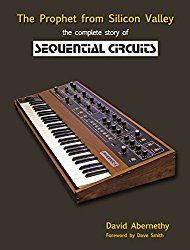
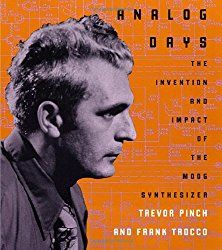
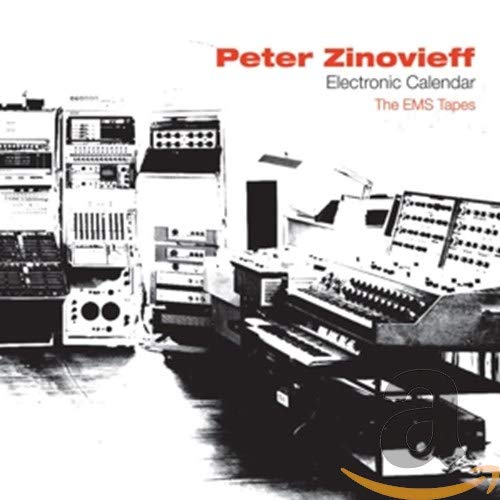
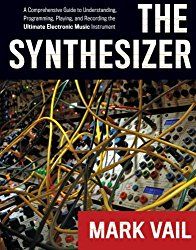
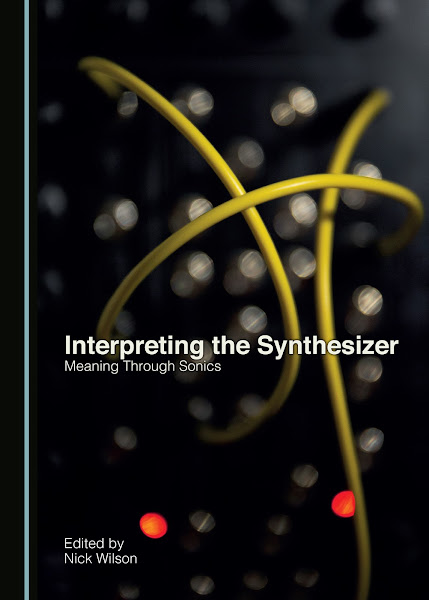
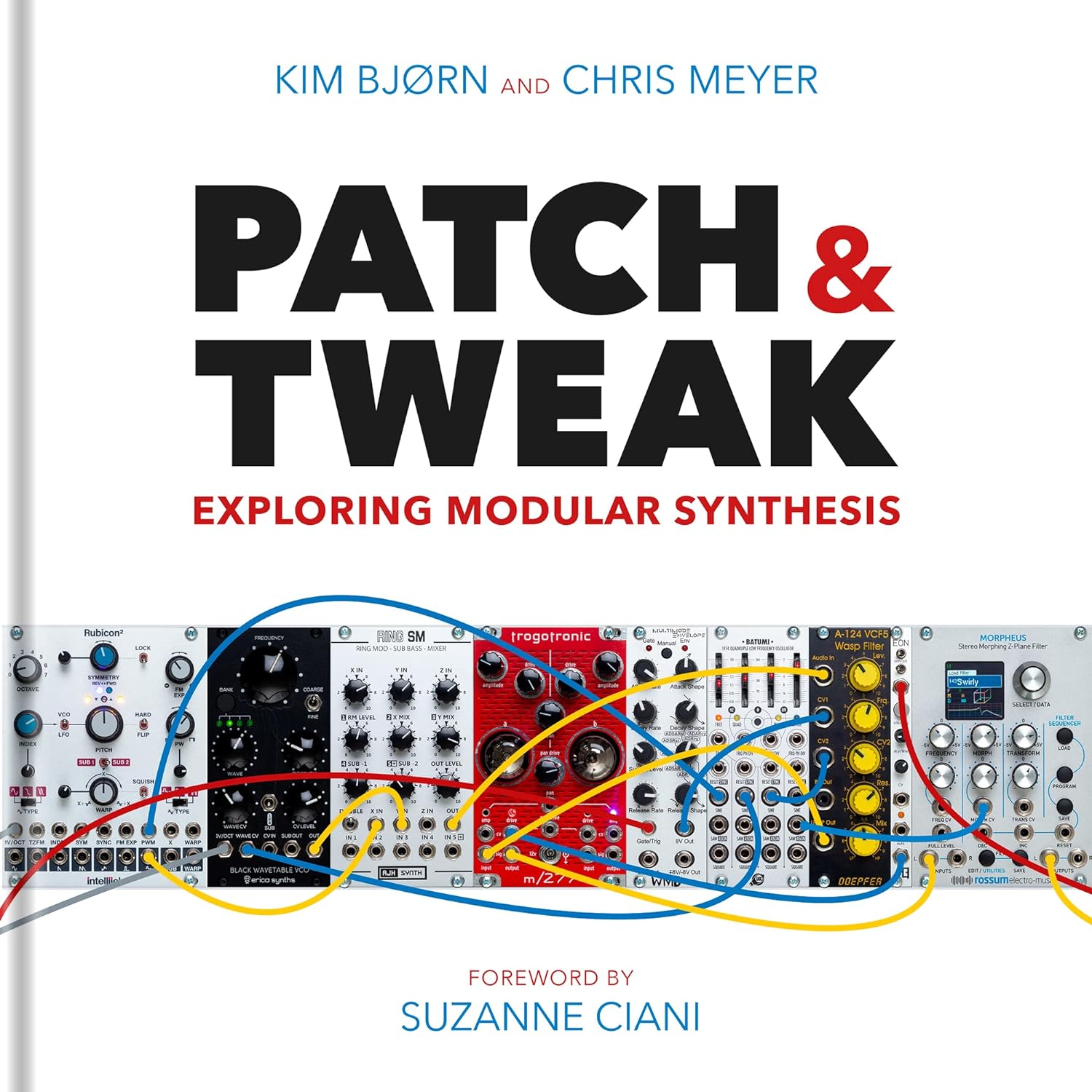
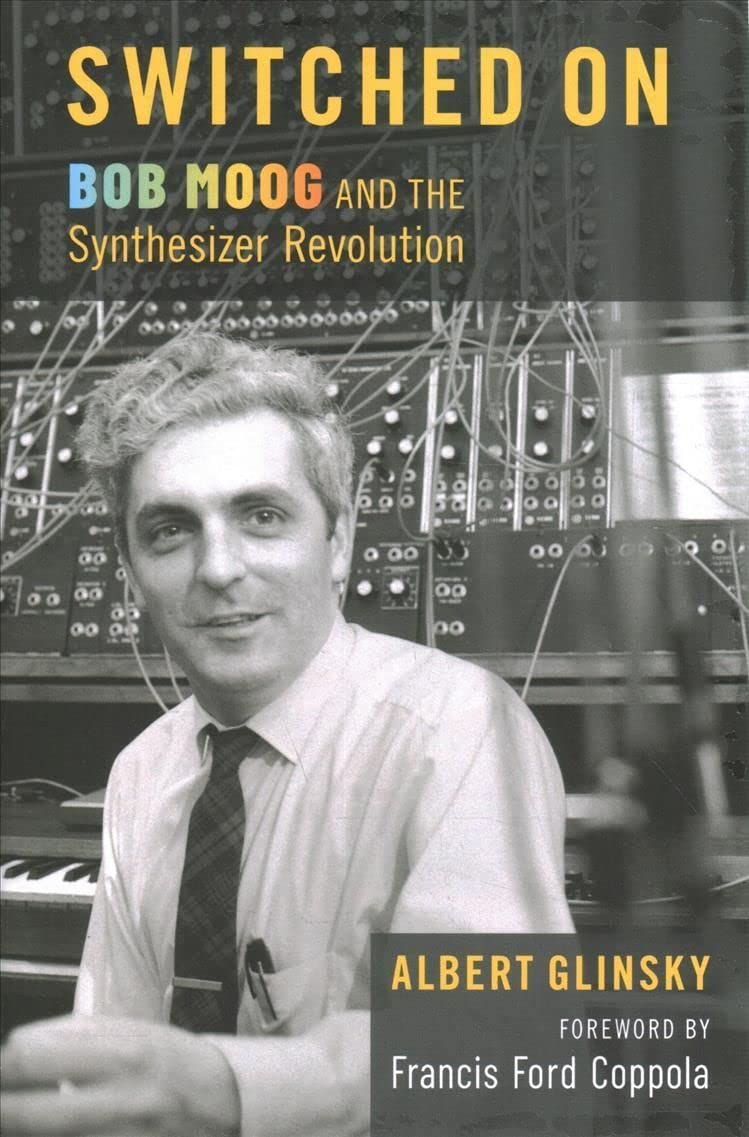
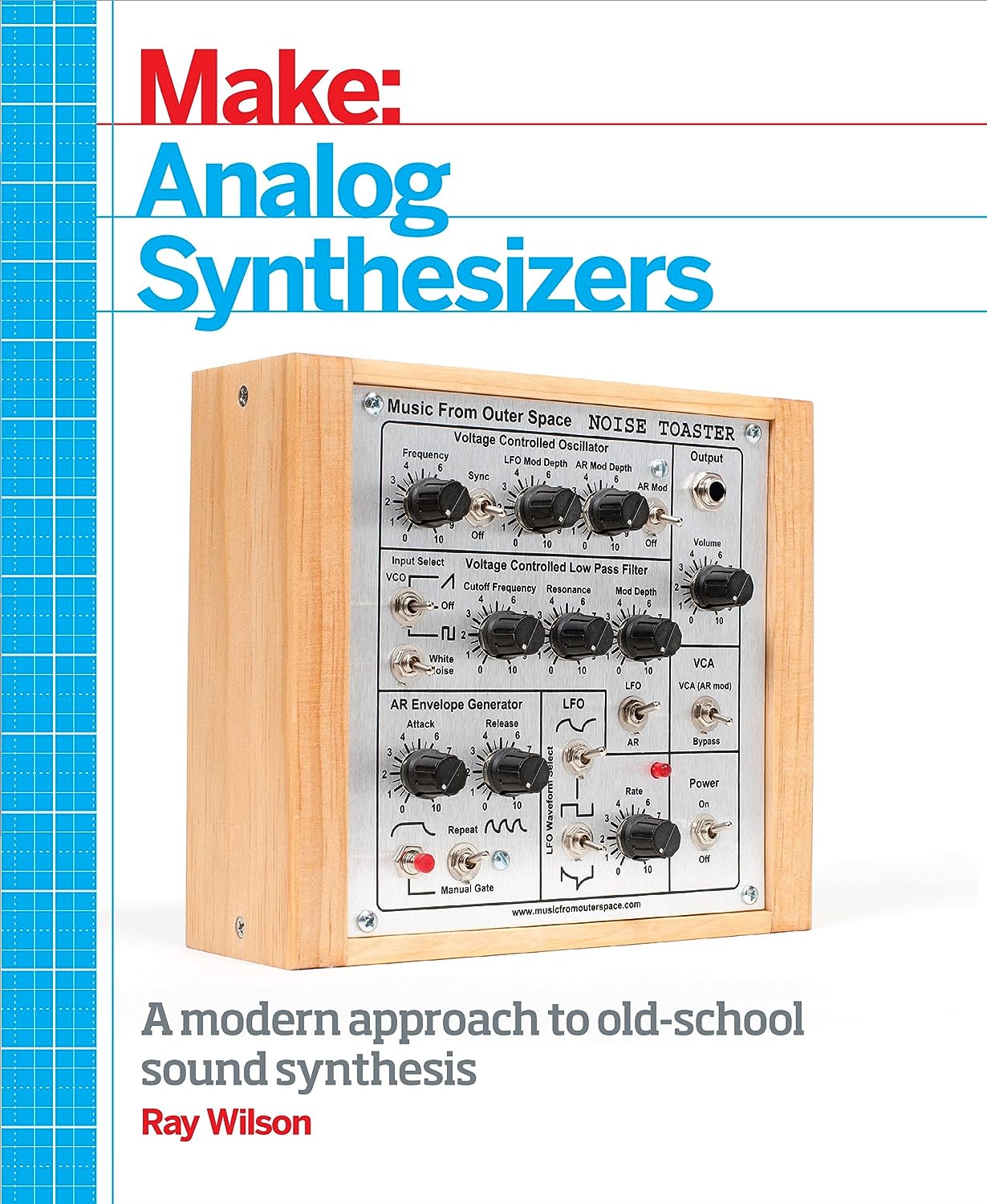
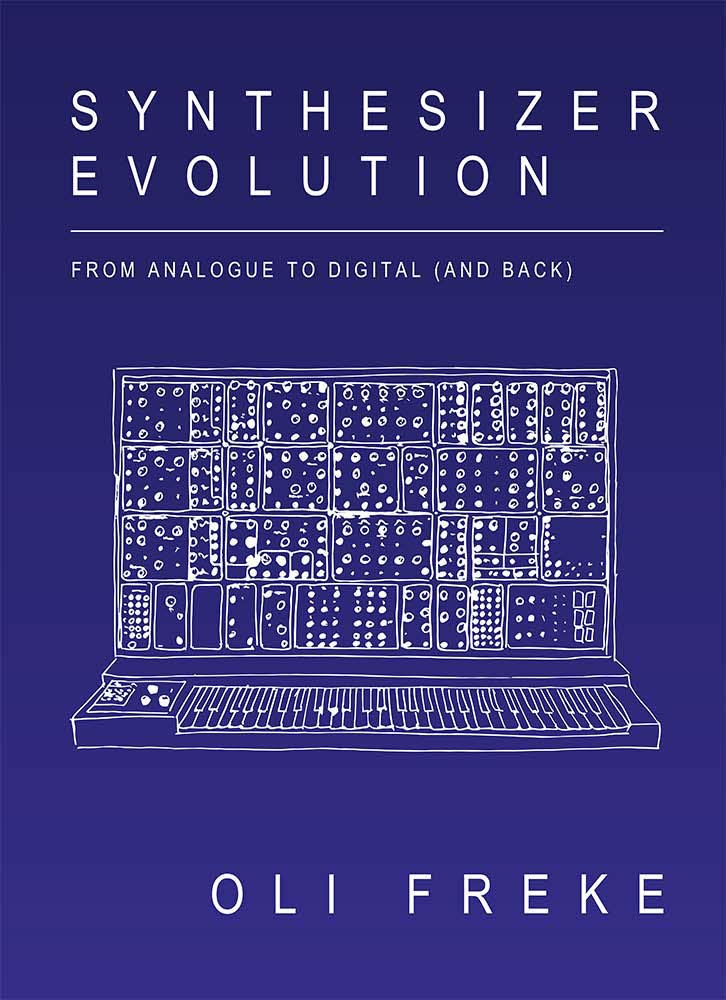
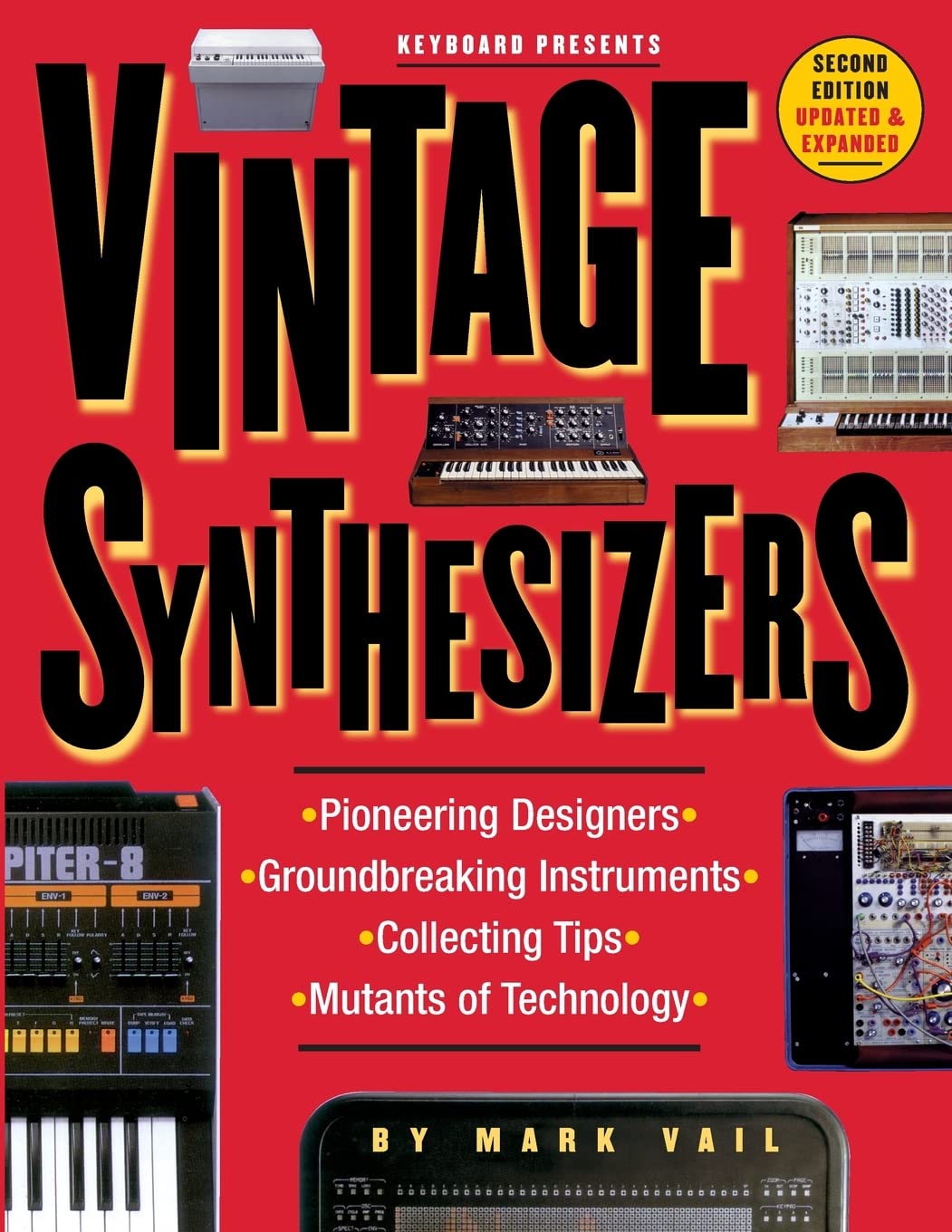
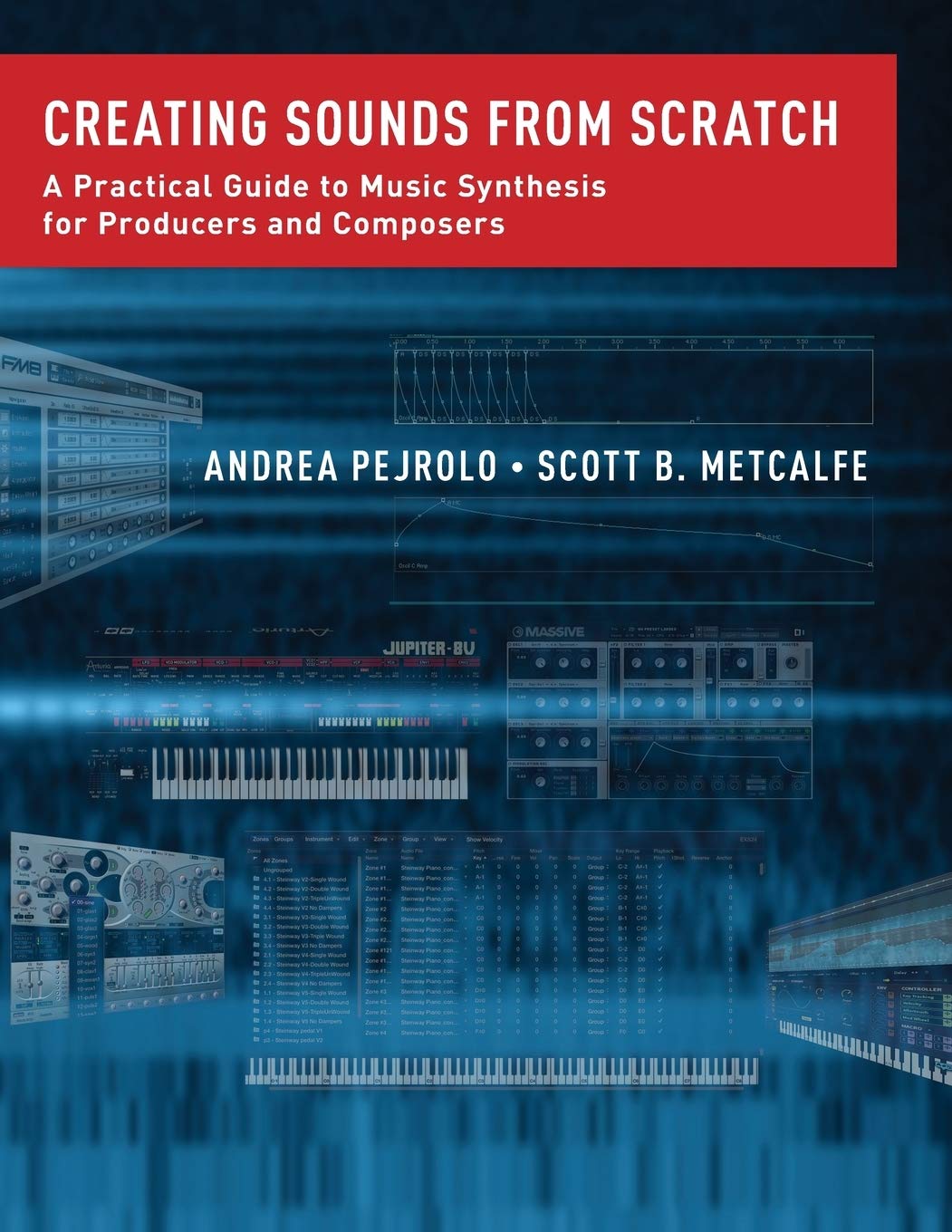
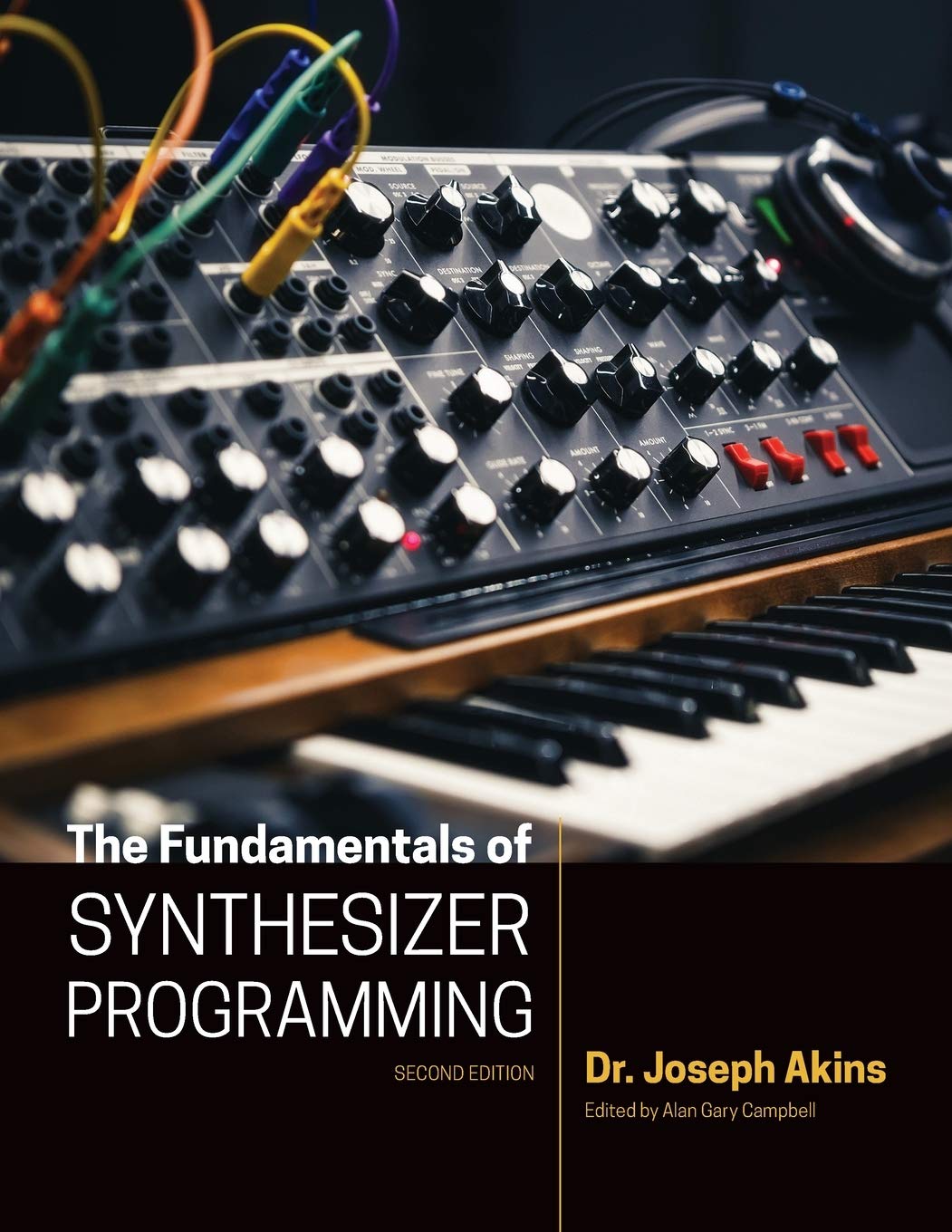

© Matrixsynth - All posts are presented here for informative, historical and educative purposes as applicable within fair use.
MATRIXSYNTH is supported by affiliate links that use cookies to track clickthroughs and sales. See the privacy policy for details.
MATRIXSYNTH - EVERYTHING SYNTH













© Matrixsynth - All posts are presented here for informative, historical and educative purposes as applicable within fair use.
MATRIXSYNTH is supported by affiliate links that use cookies to track clickthroughs and sales. See the privacy policy for details.
MATRIXSYNTH - EVERYTHING SYNTH


















